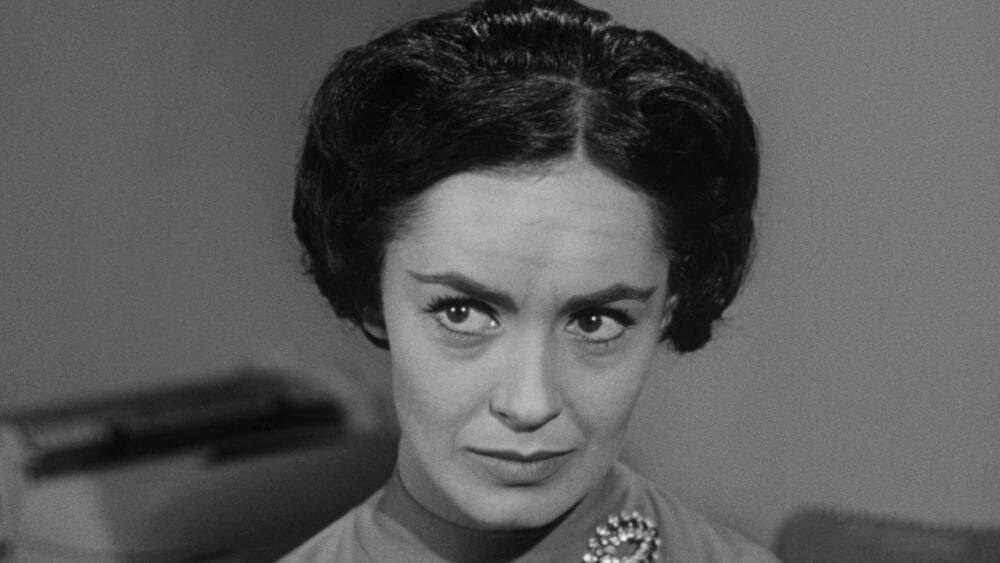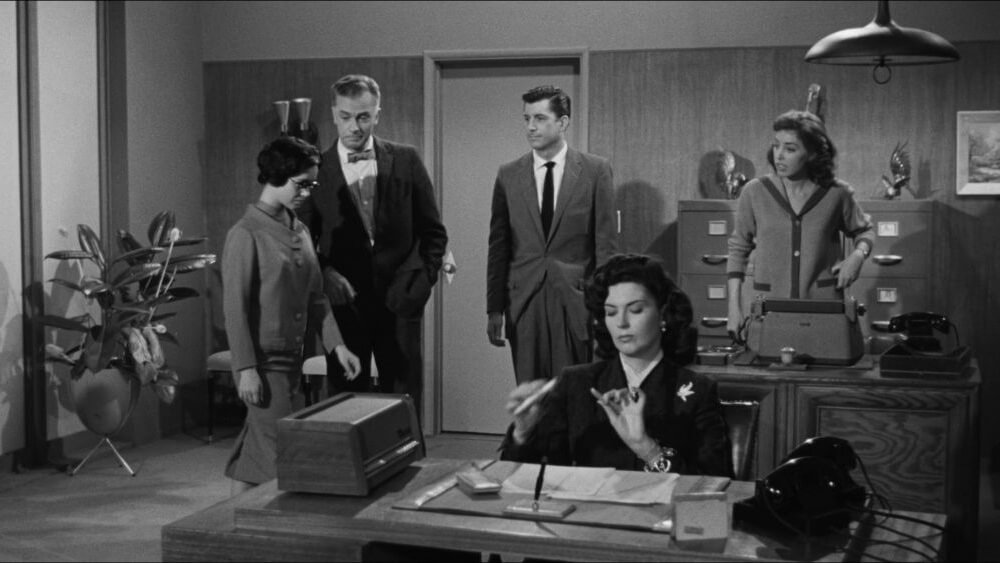THE WASP WOMAN. Monster movie from 1959

Culture abounds in real and fictional characters dreaming of eternal youth: conquistadors seeking the legendary Fountain of Youth, Elizabeth Bathory and her alleged blood baths of virgins, Dorian Gray and his aging portrait, the Nordic myth of Idun and the apples of eternal youth, the Sumerian legend of King Gilgamesh and the magical plant, and… Janice Starlin, the protagonist of an American B-movie.
Janice Starlin is the founder of a thriving cosmetic company. An energetic woman who embodies the American dream (“from rags to riches”), she is also the face of her company. However, Starlin Enterprises’ profits start to decline when it becomes evident to customers that the owner and model are aging. One day, Dr. Eric Zinthrop, a suspicious scientist who claims to have synthesized a youth elixir from bee royal jelly, appears at the company’s headquarters. Janice agrees to finance Zinthrop’s further research on the condition that she becomes the experimental subject. Unaware that ingesting large doses of the miraculous substance transforms a person into a lethal monster—a hybrid of human and insect.

The Wasp Woman was Roger Corman’s 23rd film in just four years. The American filmmaker’s formula was simple: produce cheap, black-and-white films in the genres of crime, horror, and/or science fiction (often within one title), designed for drive-in theaters. Corman made such films both in collaboration with the American International Pictures studio and under his own company, The Filmgroup, which he founded with his brother Gene. In less than a decade, The Filmgroup produced 26 films, including The Wasp Woman, which was screened as a double feature with Monte Hellman’s Beast from Haunted Cave. The production cost did not exceed $50,000.
Related:
The low budget naturally affected the film’s quality. The action was limited to a few interiors, the script was a mockery, mediocre actors delivered poor dialogues, there were almost no special effects, and the characterization of the titular monster provoked laughter rather than fear. The Wasp Woman is not very different from the cheap productions of Ed Wood, especially in the sense that Corman, like the creator of Plan 9 from Outer Space, genuinely loved cinema, which saved his early films from complete failure. They did not aspire to anything beyond simple, unpretentious entertainment. It would only be in the next decade that Corman would start creating truly excellent cinema, with his series of films based on the works of E.A. Poe.

It is worth noting that in 1962, director Jack Hill added an additional 11 minutes of material (including a prologue that provides more information about Dr. Zinthrop) to the one-hour film for the television broadcast of The Wasp Woman. This did not make the film any better, especially compared to the older and thematically similar The Fly (1958) by Kurt Neumann. In 1995, Jim Wynorski, an independent filmmaker specializing in exploitation and known for his productions with telling titles such as Deathstalker, The Return of Swamp Thing, Sins of Desire, or Cheerleader Massacre, made an extremely poor remake of Corman’s film, making the original, though absurd, a model of craftsmanship and good taste.





